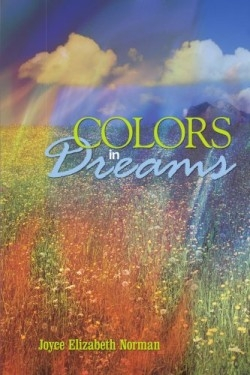It looks like you've stumbled upon a page meant to be read by our code instead of viewed directly. You're probably looking for this page.
Colors in Dreams
This collection alleges answers to age-old questions, such as that implied by the title: Do human beings dream in color? Unfortunately, though the phrasing is sometimes capable and the eye for detail strong, the poems as answers suffer from a failure of imagination and a weak editorial sense.
Norman has enjoyed a successful career as a teacher of creative writing, with many of her students receiving various awards, and her poems follow many of the directives of the creative writing classroom. They provide sensual details; they attempt turns at the end of the poem, little epiphanies; and they tell stories in an attempt to make everyday life more than a mere sum of its parts. In “Dipping Clams,” perhaps the strongest poem of the volume, a woman discovers melanoma, and in a series of associative vignettes, Norman gives a strong suggestion of this lost woman:
…the auditor
Asking why the yellow suit
With the patched leather
Elbows was a legitimate
Professional expense, and there
Was that question of the lace teddy.
Here, the woman’s voice comes through with a wry sense of humor. The clothes suggest their wearer; the situation, the run of her luck. However, in many other poems, Norman explores less interesting matter to less interesting effect. In ‘Rocks,’ the opening intrigues: “Venus says the rocks / he uses / to build the fireplaces / are better than women.” A fascinating premise, but rather than explore Venus, the lascivious mason, the poet chooses to make the rocks into stereotypical flirting girls: “The rocks smile, pose. / “Look at me, “ they say. / We are pretty and witty and gay.” It is one of many lost opportunities. In “Reflections,” a grand-niece remembers when her great-aunt received a notice of a war death. The moment has a nice tableau quality to it, but it reiterates what anyone might imagine—the woman was devastated. The poet offers no moment of epiphany greater than that. The poem never rises, never aspires.
In other poems, the poet overwrites the poem, including superfluous detail, derailing any potentially tense juxtapositions of images. The poem is inside the words somewhere, but until editorial carving articulates a more shapely poem, much power is lost. In addition, many of the similes and metaphors refer back to domestic details, but do little to make them sing. “Pink in the Middle” is a good example of this issue: “His laugh mixes with the / sizzling steaks, the whoosh of the traffic.” First, the line break is arbitrary, the eye rests on ‘the’ rather than a concrete detail. Second, the sizzle of the steak might merge with the laughter, thereby creating an image with both sound and heat. The details need to do double duty; poetry is about compression and intensity, not prose-y lines. Too many other moments from the past as well as distracting details interfere with the making of meaning and the lyric moment.
Norman finds many moments of inspiration, but falters with her level of language and imagination.
Reviewed by
Camille-Yvette Welsch
Disclosure: This article is not an endorsement, but a review. The publisher of this book provided free copies of the book and paid a small fee to have their book reviewed by a professional reviewer. Foreword Reviews and Clarion Reviews make no guarantee that the publisher will receive a positive review. Foreword Magazine, Inc. is disclosing this in accordance with the Federal Trade Commission’s 16 CFR, Part 255.
